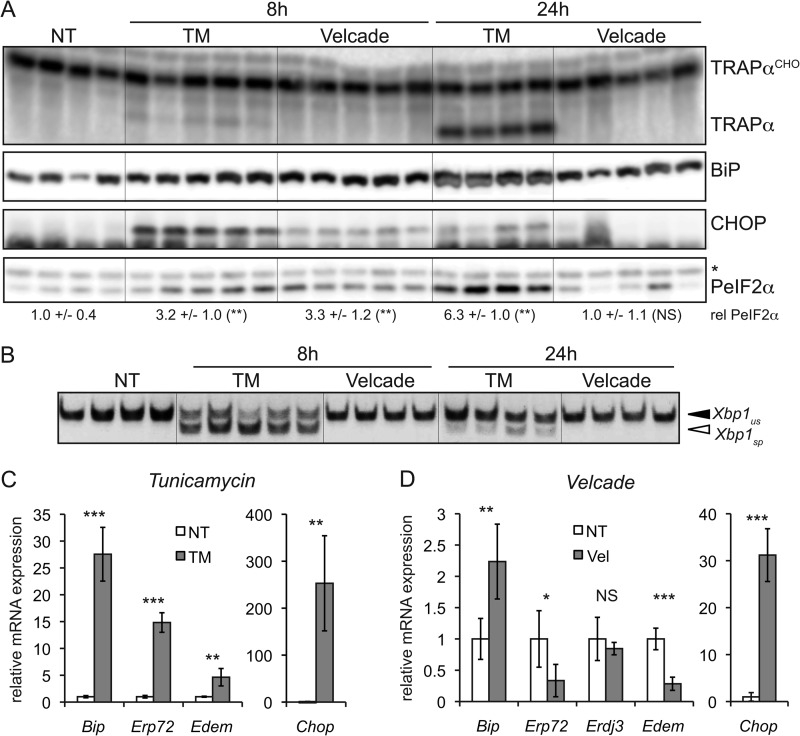FIGURE 2.
eIF2α signaling is common to TM and Velcade challenge. A, wild-type animals were challenged with TM or Velcade as described in the legend to Fig. 1, and livers were taken after 8 or 24 h of challenge. Samples were analyzed by immunoblotting for the indicated proteins. Glycosylated (TRAPαCHO) and unglycosylated forms of the ER-resident glycoprotein TRAPα are indicated. The asterisk represents a nonspecific band that indicates equivalent loading. The relative (rel) amount of phosphorylated eIF2α (PeIF2α) was quantitated by densitometry and is given below the blot. NT, non-treated. *, p < 0.05; **, p < 0.01; ***, p < 0.001; NS, p > 0.05 by two-tailed Student's t test. Error term represents means ± S.D. B, RNA was isolated from liver samples of animals treated as described for A, and the presence of spliced (sp) and unspliced (us) Xbp1 mRNAs was detected by RT-PCR. The image is black-to-white inverted for visual clarity. C and D, RNA prepared as described for B was analyzed by qRT-PCR for expression of the indicated genes in animals treated for 8 h with TM or Velcade (Vel). Expression was normalized to Gapdh and Hprt and is expressed relative to the level in vehicle-treated animals (n = three to five animals per group).

